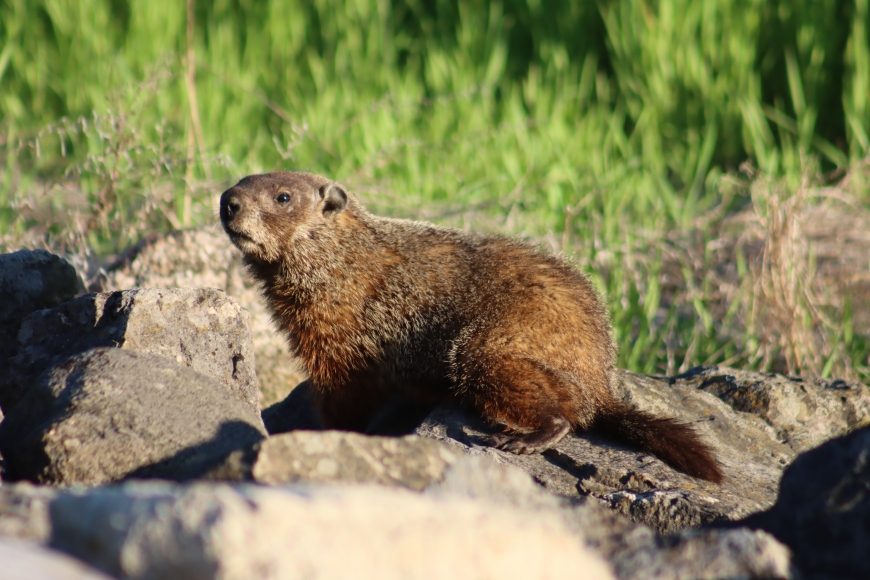



Groundhog Day, Again?
Again?
I watched the 1993 film Groundhog Day featuring Bill Murray at least a dozen times. Or maybe it just felt that way. Just as February 2 was on a nonstop loop in the film, this year’s iteration of Groundhog Day is likely to feel roughly the same as all the previous ones. I think it’s a good metaphor for this time of year, as we stumble out each morning in the semi-dark to defrost the car, not even sure what day of the week it is. We probably don’t have the energy for an exciting holiday right now.
The notion that sunshine on the second day in February portends a late spring is an idea that began in ancient Europe. The date marks the pagan festival of Imbolc, halfway between the winter solstice and spring equinox. In the Celtic world, Imbolc was dedicated to the goddess Brigid (Brigit), the traditional patroness of healing, poetry, hearth and home, agriculture and fertility. She was also a fierce warrior who killed adversaries like a champ. As Christianity spread, Imbolc was supplanted by Candlemas Day, but both traditions embrace the “sunny equals more winter, and cloudy means spring” theme.
Mostly because Europe lacked groundhogs, Groundhog Day was invented in the New World, first popping up among Pennsylvania Germans (who were steeped in the Candlemas tradition) in 1887. Though Punxsutawney Phil was the original prognosticating marmot, others like Wiarton Willie in Wiarton, Ontario, and Jimmy the Groundhog in Sun Prairie, followed.
There’s an old children’s rhyme that asks “How much wood could a woodchuck chuck if a woodchuck could chuck wood?” I’d like to think that researchers are hard at work right now, looking for an answer to this enigma.
The rhyme suggests that woodchucks are somehow employed in the forest-products industry. In truth, these critters have no interest in wood. Like words such as moose, hickory and skunk, woodchuck (wojak) is of Native American origin, Algonquin in this case. I don’t know its literal translation, but I suspect it means “fat fur-ball that can inhale your garden faster than you can say Punxsutawney Phil.”
Much as I respect the origin of “woodchuck,” I’m in favor of using one of its other names, groundhog, which is more descriptive (also, “Woodchuck Day” doesn’t sound right). Not only do these rotund herbivores reside underground, they’re such gluttons that I’m pretty sure even swine call them hogs. Tellingly, another moniker is “whistle-pig,” referring both to groundhogs’ shrill warning call as well as their voracious appetites.
Native to most of North America from southern Alaska to Georgia, groundhogs are a type of rodent called a marmot. They’re related to other marmots and to western ground squirrels, but in the Northeast, they have no close kin. Given what a marmot can eat, that’s a mercy.
They may be gluttons, but they’re not lazy. Groundhogs dig extensive burrows that are up to 5 feet deep and 40 feet long, with each burrow having two to five entrances. Supposedly, the average groundhog moves 35 cubic feet of soil excavating its burrow, which is upwards of 3,000 pounds. I can picture the poor bedraggled interns who had to spoon soil into measuring-cups in the rain to get these figures.
Mature groundhogs in the back-country typically measure 15 to 25 inches long and weigh 5 to 9 pounds. With access to lush gardens or tasty alfalfa, though, they can reach 30 inches in length and tip the scales at 30 pounds. Now that’s a ground hog.
We may not know how much wood a woodchuck can chuck, but we do know how much ground a groundhog can hog: a lot, especially if beans or peas are growing on said ground. Needless to say, their habit of vacuuming up fields and gardens has given them a bad name in some circles.
Plant rustling is bad enough, but their hole-digging hobby really riles farmers. Groundhog holes often injure livestock and weaken foundations, and their soil mounds can damage equipment. Many a farmer trying to mow hay has cursed the groundhog when hay-mowing equipment breaks down after hitting a soil pile.
True hibernators, groundhogs usually den-up in October, their winter body temperature dropping to 50 degrees Fahrenheit, and their heart slowing to a few beats per minute. Groundhogs might emerge in February in parts of Pennsylvania, but up north you won’t find one blearily sniffing around for a mate that early.
I used to live in the southern Adirondack region, and one late March I saw a burrow entrance with a halo of dirt scattered on the snow from where the groundhog had recently burst out, a squint-eyed dust mop looking for love. I couldn’t tell if it had gone back in for a nap after seeing that winter had not yet departed.
I say we pull researchers off the Woodchuck-Chucking Quantification Project, and have them find a way to ensure that Groundhog Day is overcast so we can get an early dismissal from winter.
I wish you all a Happy Groundhog Day, and hope nobody repeats this date until next year.

